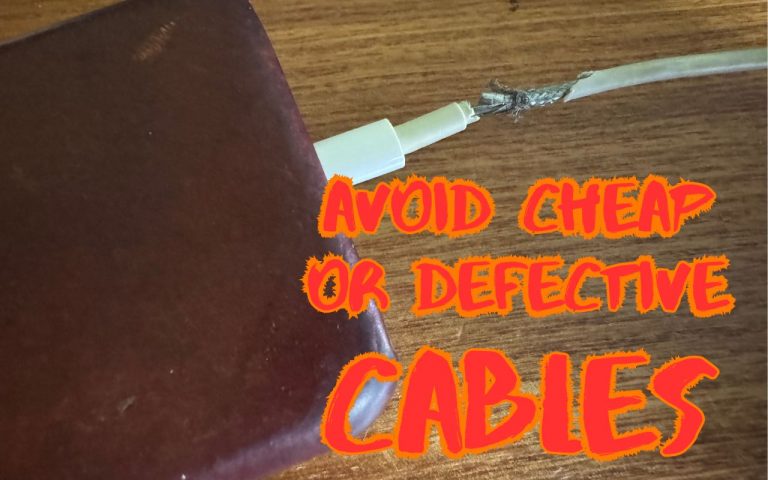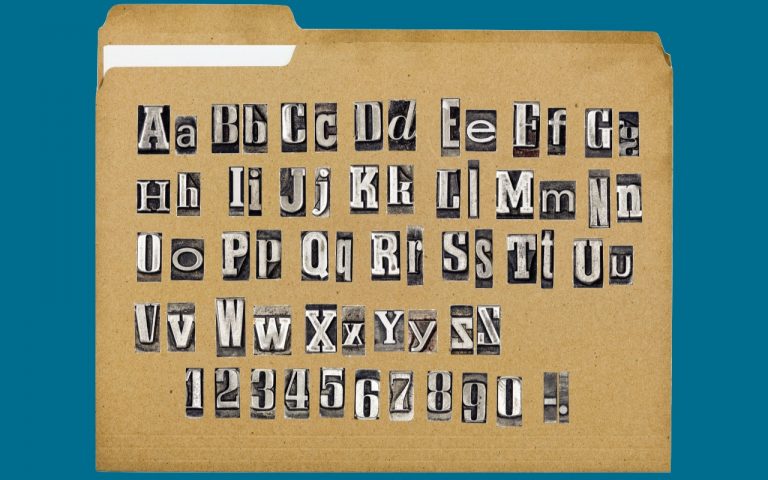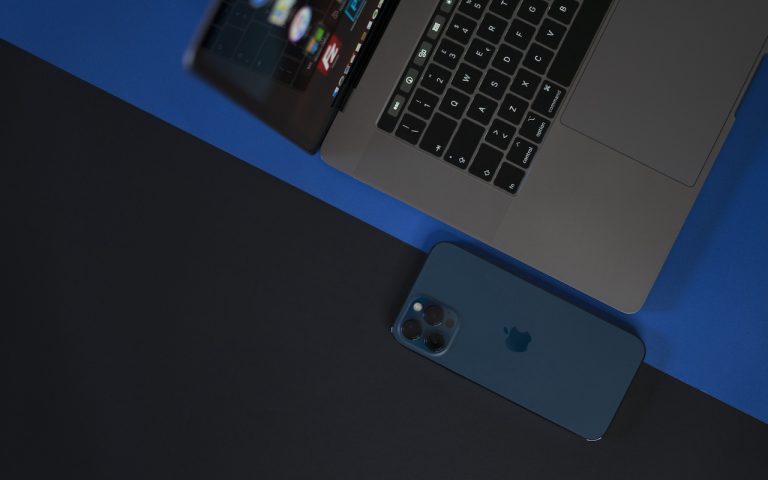How to Manage Image Sizes for Email and Messages: A Comprehensive Guide
In the early days of the Internet, saving bandwidth was crucial due to slow modems. Watching images load on web pages and waiting for large email attachments was common. Today, with average Internet download speeds in the US nearing 250 megabits per second, these issues are largely behind us. Most web pages load instantly, emails appear immediately, and multiple video streams run without a hitch.
Why You Should Send Actual Size Images
In most cases, you don’t need to shrink images shared via email or Messages. Doing so can cause problems for recipients, such as images being too small or fuzzy, not matching website dimensions, or being too low quality for long-term use.
Exceptions to Sending Actual Size Images
There are exceptions where smaller or lower-quality images may be necessary:
- Rural areas with slow Internet connections
- Places with no Wi-Fi and poor cell service
- Remote locations with only satellite Internet
If you encounter long send times or receive complaints from recipients, consider resizing images. Otherwise, it’s best to send actual size images. Here’s how to ensure you do that.
Sending Actual Size Images in Email
How do you ensure you’re not sending downsized images in email? In Mail on Apple’s devices, the details vary slightly depending on which device you are using, but in each case, you want to use the Actual Size option. Neither Gmail nor Outlook suffers from this problem. Here’s what you need to know for each of these email clients:
- Mail on the Mac:
- Drag an image into a Mail message.
- Use the Image Size menu to select “Actual Size.” This menu remembers its setting, so reset it if needed.
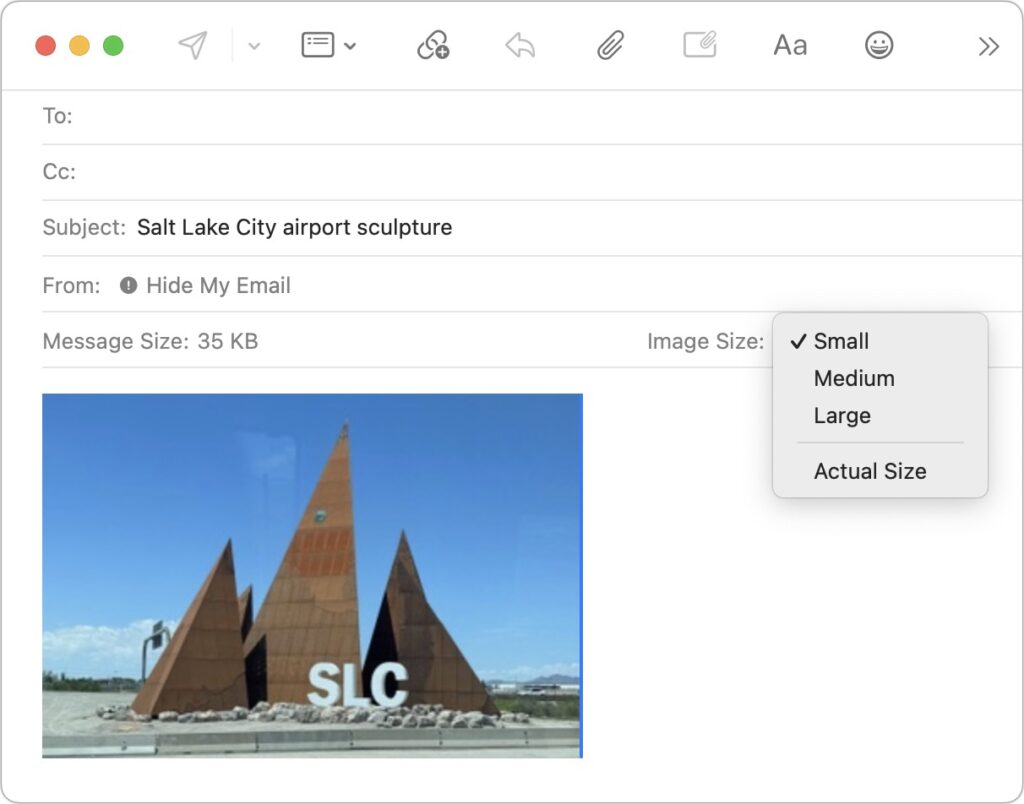
- Mail on the iPad:
- Add an image to a message.
- Tap the header information to reveal the Image Size line.
- Select “Actual Size” to send the original image.
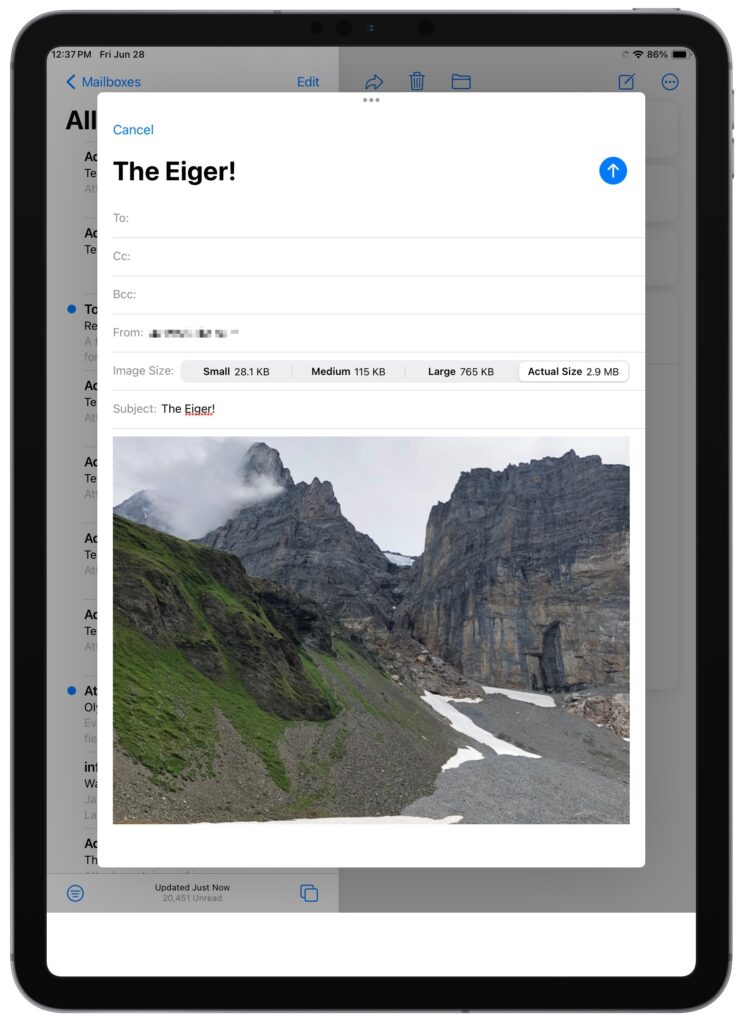
- Mail on the iPhone: Because of the iPhone’s smaller screen size, Mail on the iPhone asks how to resize the image(s) after you tap the send button. The results are the same as on the iPad, described above.
- Add an image to a message.
- After tapping send, select “Actual Size.”

- Gmail on the Web:
- Gmail doesn’t resize images. Use the Original option when necessary.
- Note the 25 MB limit on attachments. Resize images before attaching if needed.
- If you need to send an image at a particular size using Gmail, resize it before attaching—see below for a tip on how to do that.

- Outlook on the Mac:
- Outlook maintains the original file size and resolution even if resized visibly.
- Resize images before sending if a smaller size is required – read below for more help.
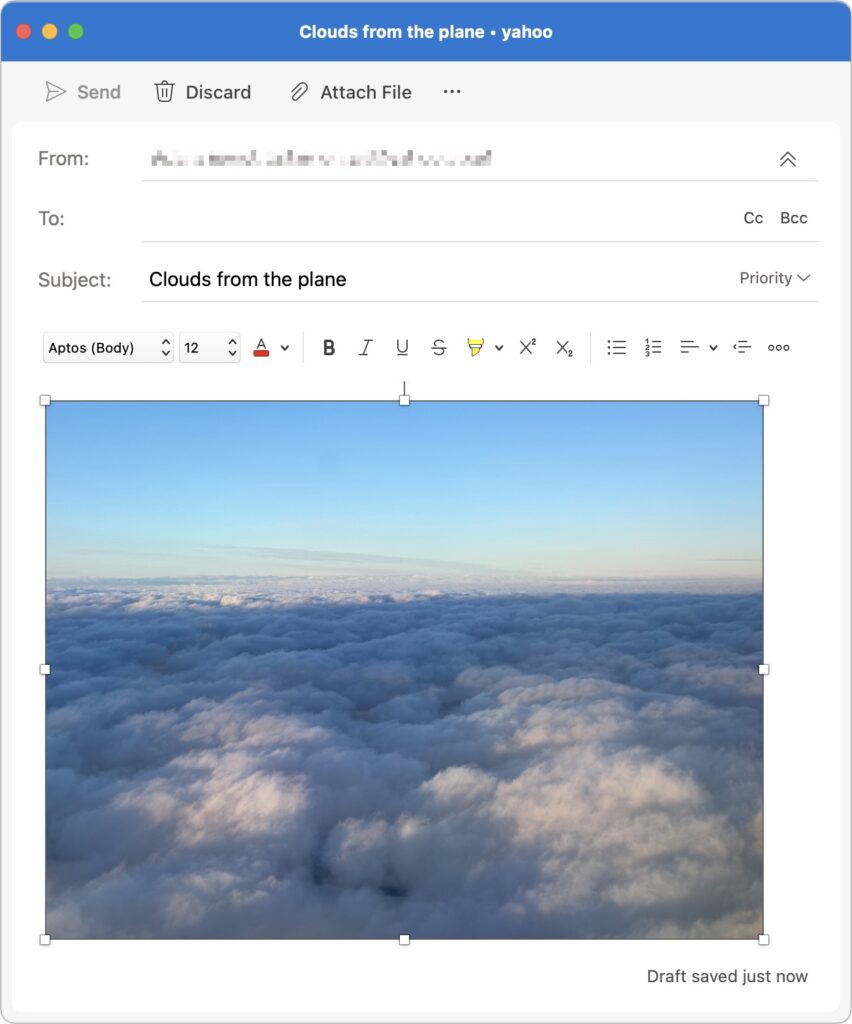
Avoiding Lower-Quality Images in Messages
Although it may seem confusing, keeping images from being resized in email is pretty straightforward. Ensuring that you send full-quality images in Messages is trickier because there are multiple variables in play:
- Turn off Low Quality Image Mode (Only turn it on if it’s paramount that you save bandwidth due to a slow connection or data cap.):
- On iPhone and iPad, go to Settings > Messages.
- Turn off Low Quality Image Mode.
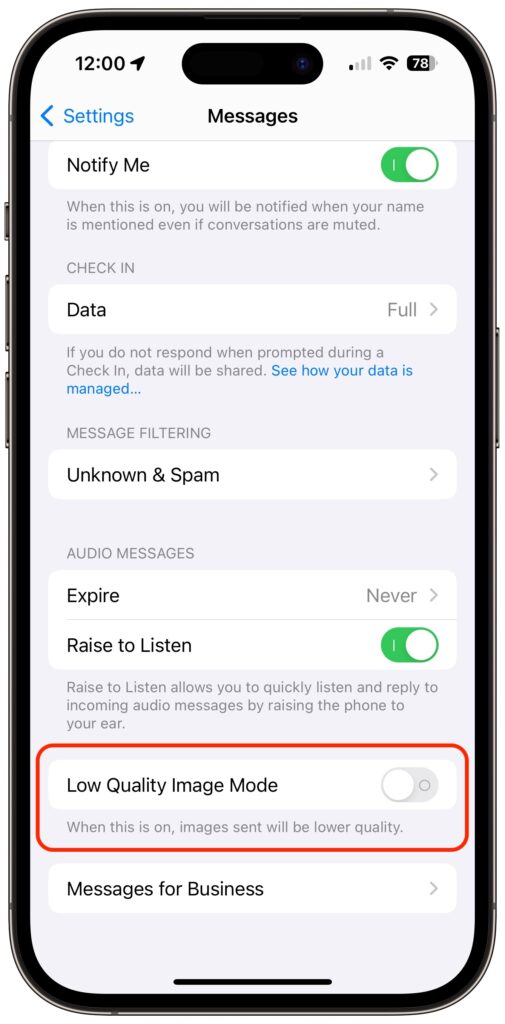
- Avoid sending via SMS/MMS: There’s no need for Low Quality Image Mode for messages sent via SMS (green bubble conversations) because Messages automatically resizes and compresses images to fit within carrier limits. You have no control over this process, which is likely to be unpredictable. If you need to send someone a full-quality image, use email instead of SMS. Happily, in iOS 18, Messages will support the RCS standard that allows full-quality images.
- Prefer high-speed connections: Although Apple doesn’t document anything along these lines, some suggest that Messages may reduce image size or quality when using slow networks. If you (or your recipient) experience issues while using weak cellular connectivity, try again when connected to the Internet via high-speed Wi-Fi.
Bonus Tip: How to Resize an Image Manually
Let’s flip the problem around. Say you use Gmail or Outlook and need to send an image with specific dimensions or a smaller file size than the original. How do you do that easily? Preview! That’s right, Apple’s Preview works well for resizing images and shrinking file sizes.
- Open the image in Preview.
- Choose Tools > Adjust Size to resize dimensions.
- Save the resized image.
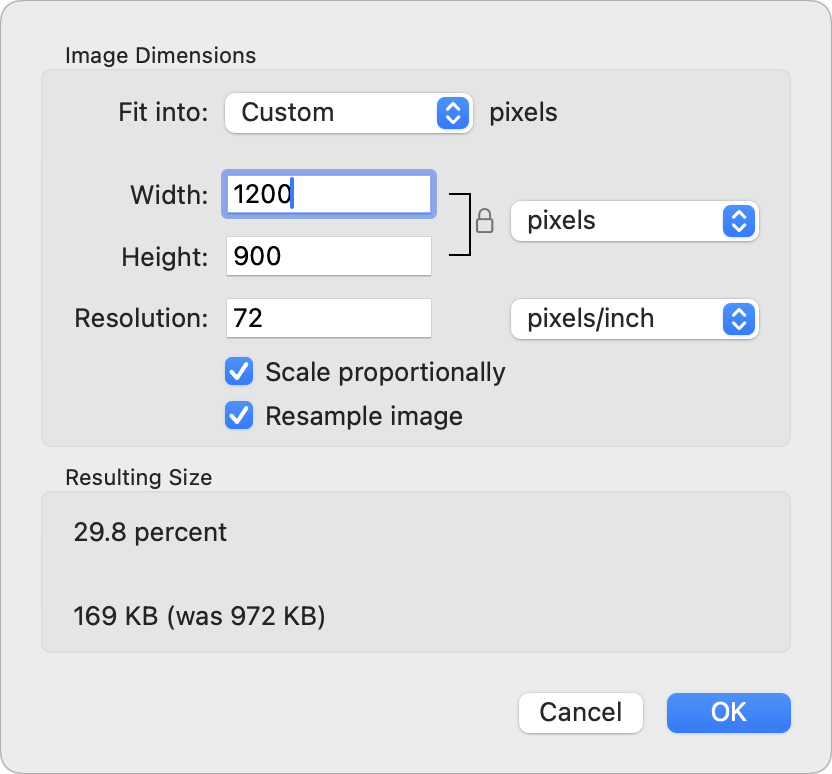
What if you want to reduce an image’s file size without changing its dimensions?
- Open the image in Preview.
- Choose File > Export, select JPEG, and adjust the Quality slider.
- Save the image and test for the best quality-to-size ratio.
In most cases, it’s best to send the original image to avoid quality issues.
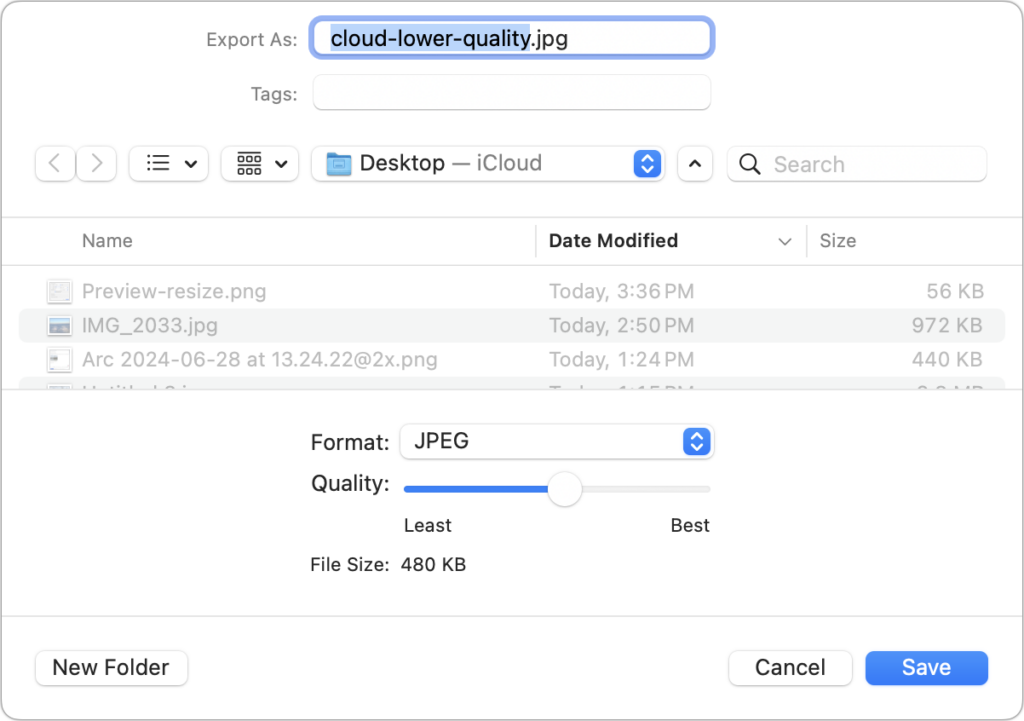
Generally speaking, changing an image’s dimensions is a better way to reduce file size than increasing compression.
But really, in most cases, just send the original image.
(Featured image by Adam Engst)


